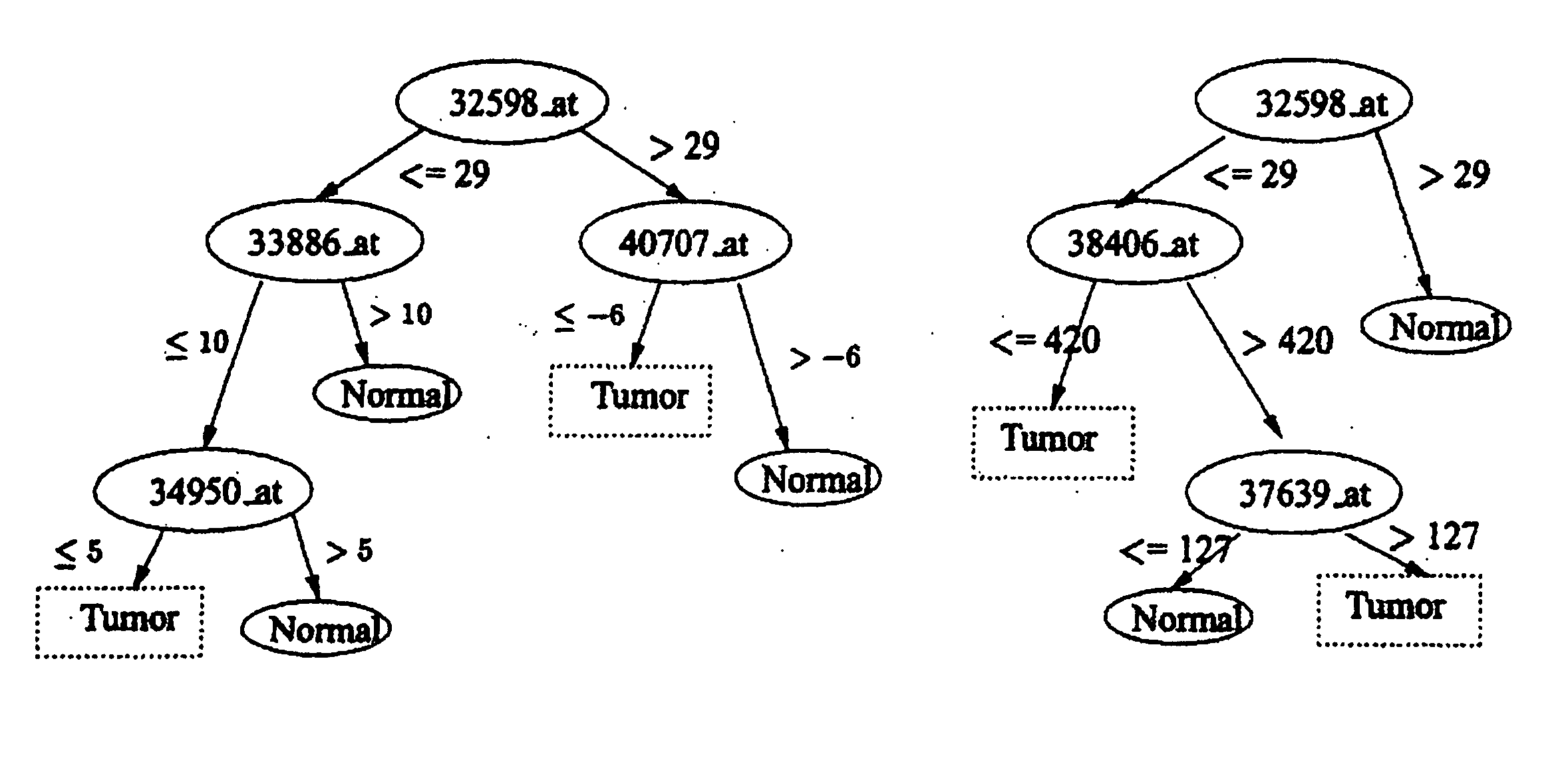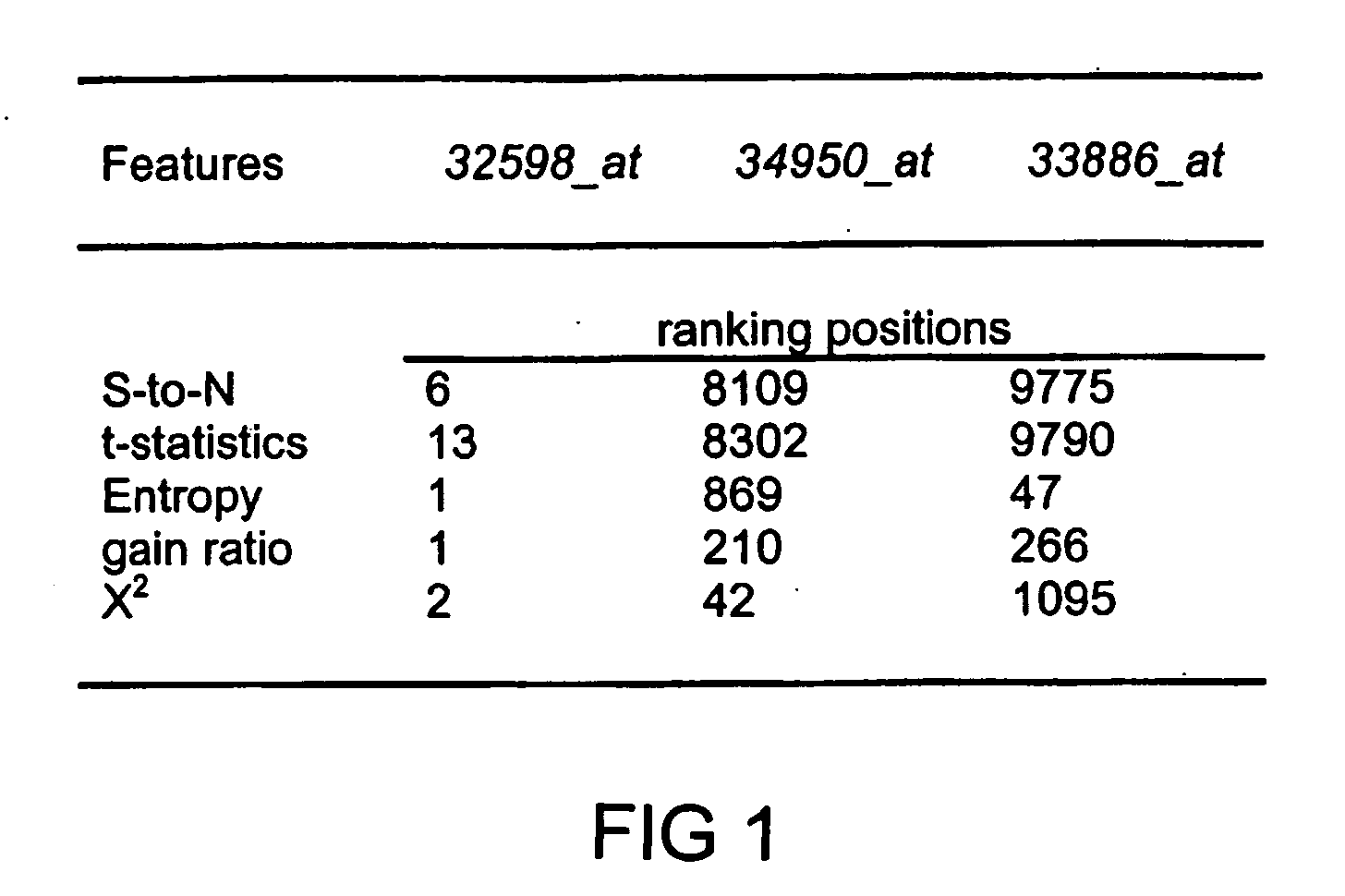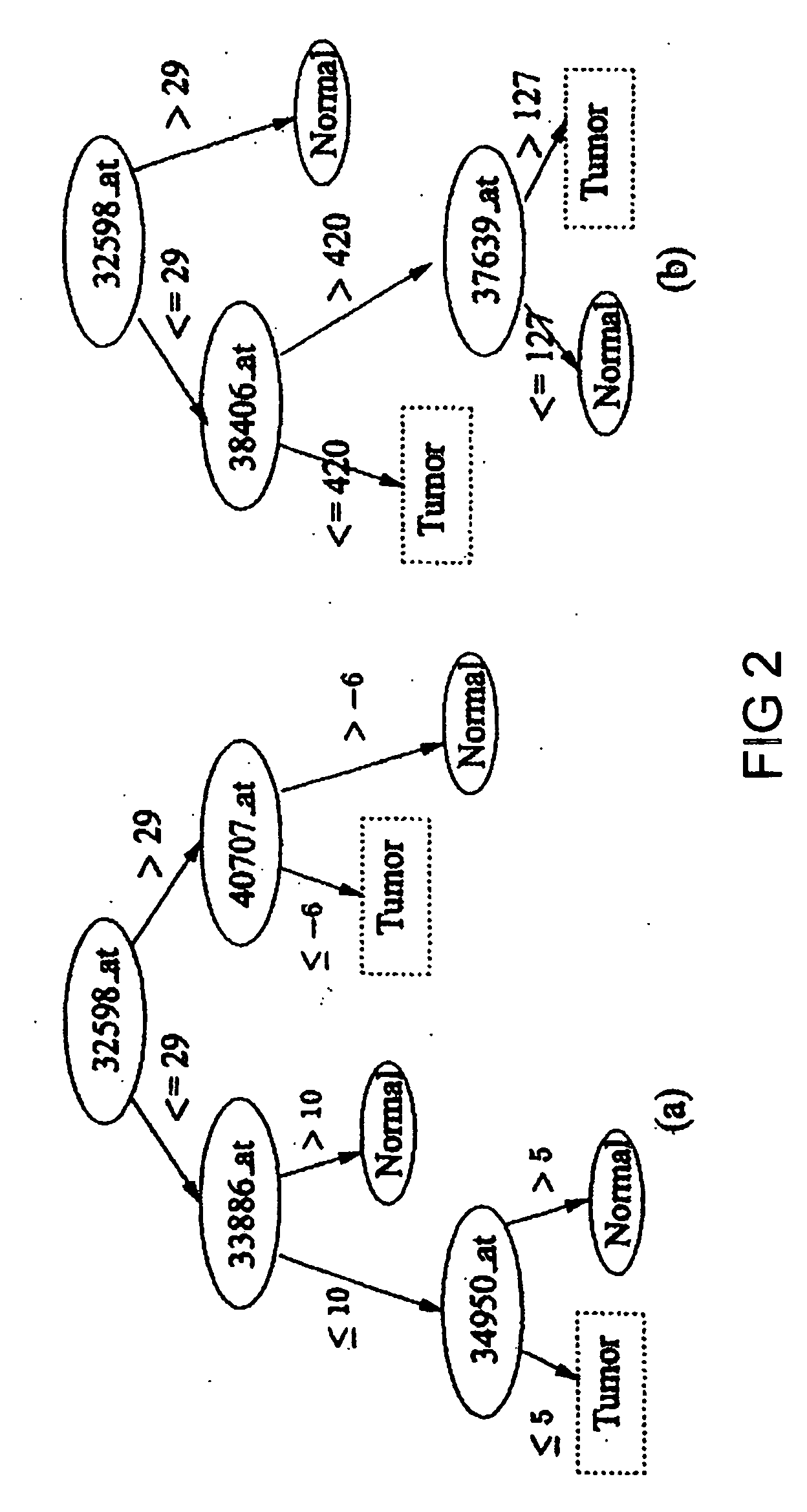Methods of processing biological data
- Summary
- Abstract
- Description
- Claims
- Application Information
AI Technical Summary
Benefits of technology
Problems solved by technology
Method used
Image
Examples
example 1
Classification of Ovarian Tumor and Normal Patients by Proteomics
[0082] Applicant's first evaluation is on a recent ovarian data set (Petricoin, E. F., et al., (2002) Lancet, 359, 572-577) which is about how to distinguish ovarian cancer from non-cancer using serum proteomic patterns (instead of DNA expression). This proteomic spectra data generated by mass spectroscopy can be found at http: / / clinicalproteomics.steem.com; there are several similar data sets in this site. The largest dataset (dated Jun. 19, 2002) was chosen for this example. The data has a total of 253 samples: 91 controls (non-cancer) and 162 ovarian cancers. Each data sample is described by 15,154 features, namely, the relative amplitudes of the intensities at 15,154 molecular mass / charge (M / Z) identities.
[0083] For each feature, all values (intensities) were normalized for the 253 samples using the following formula: NV=(V−Min) / (Max−Mm), where NV is the normalized value, V the raw value, Mm the minimum intensity...
example 2
Subtype Classification of Childhood Leukemia by Gene Expression
[0087] Acute Lymphoblastic Leukemia (ALL) in children is a heterogeneous disease. The current technology to identify correct subtypes of leukemia is an imprecise and expensive process, requiring the combined expertise from many specialists who are not commonly available in a single medical center (Yeoh, E-J., et al. (2002). Cancer Cell 1, 133-143.). Using microarray gene expression technology and supervised classification algorithms, this problem can be solved such that the cost of diagnosis is reduced and at the same time the accuracy of both diagnosis and prognosis is increased.
[0088] Subtype classification of childhood leukemia has been comprehensively studied previously. The whole data consists of gene expression profiles of 327 ALL samples. These profiles were obtained by hybridization on the Affymetrix U95A GeneChip containing probes for 12558 genes. The data contain all the known acute lymphoblastic leukemia sub...
example 3
Classification of Lung Cancer by Gene Expression
[0091] Gene expression method can also be used to classify lung cancer to potentially replace current cumbersome conventional methods to detect, for instance, the pathological distinction between malignant pleural mesothelioma (MPM) and adenocarcinoma (ADCA) of the lung. In fact, a recent study has used a ratio-based diagnosis to accurately differentiate between MPM and lung cancer in 181 tissue samples (31 MPM and 150 ADCA), suggesting that gene expression results can be useful in clinical diagnosis of lung cancer.
[0092] Note that in this case, the training set is fairly small, containing 32 samples (16 MPM and 16 ADCA), while the test set is relatively large, having 149 samples (15 MPM and 134 ADCA). Each sample is described by 12,533 features (genes). Results in comparison to those by the C4.5 family algorithms are shown in FIG. 9. Once again, applicant's results are better than C4.5 (single, bagging, and boosting).
PUM
 Login to View More
Login to View More Abstract
Description
Claims
Application Information
 Login to View More
Login to View More - R&D
- Intellectual Property
- Life Sciences
- Materials
- Tech Scout
- Unparalleled Data Quality
- Higher Quality Content
- 60% Fewer Hallucinations
Browse by: Latest US Patents, China's latest patents, Technical Efficacy Thesaurus, Application Domain, Technology Topic, Popular Technical Reports.
© 2025 PatSnap. All rights reserved.Legal|Privacy policy|Modern Slavery Act Transparency Statement|Sitemap|About US| Contact US: help@patsnap.com



